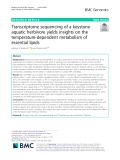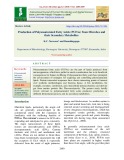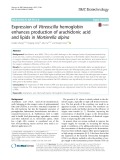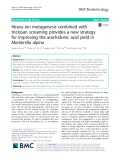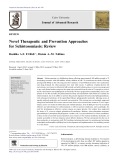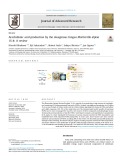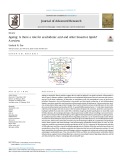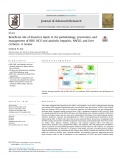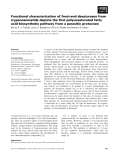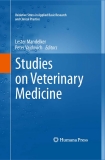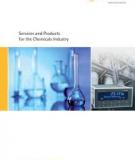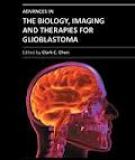
Production of polyunsaturated fatty acids
-
Nutritional quality of phytoplankton is a major determinant of the trophic transfer efficiency at the plant-herbivore interface in freshwater food webs. In particular, the phytoplankton’s content of the essential polyunsaturated omega-3 fatty acid eicosapentaenoic acid (EPA) has been repeatedly shown to limit secondary production in the major zooplankton herbivore genus Daphnia.
 15p
15p  viansan2711
viansan2711
 30-07-2021
30-07-2021
 7
7
 1
1
 Download
Download
-
Polyunsaturated fatty acids (PUFAs) are the part of lipids produced from microorganisms, which have pulled in much consideration due to its beneficial consequences for human wellbeing. Polyunsaturated fatty acids have prompted the advancement of strategies for acquiring and controlling polyunsaturated lipids. Protein interceded responses have shown interesting points of interest over synthetic methodologies and business lipase. A few metabolites, for example, enzymes, carotinoids, and extracellular polysaccharides can likewise get from marine protists like Thraustochytrids.
 10p
10p  nguaconbaynhay6
nguaconbaynhay6
 23-06-2020
23-06-2020
 12
12
 0
0
 Download
Download
-
Arachidonic acid (ARA, C20:4, n-6), which belongs to the omega-6 series of polyunsaturated fatty acids and has a variety of biological activities, is commercially produced in Mortierella alpina.
 10p
10p  vihamax2711
vihamax2711
 21-04-2020
21-04-2020
 13
13
 1
1
 Download
Download
-
Arachidonic acid (ARA), which is a ω-6 polyunsaturated fatty acid, has a wide range of biological activities and is an essential component of cellular membranes in some human tissues. Mortierella alpina is the best strain for industrial production of ARA.
 9p
9p  vihamax2711
vihamax2711
 21-04-2020
21-04-2020
 15
15
 0
0
 Download
Download
-
Schistosomiasis is a debilitating disease affecting approximately 600 million people in 74 developing countries, with 800 million, mostly children at risk. To circumvent the threat of having praziquantel (PZQ) as the only drug used for treatment, several PZQ derivatives were synthesized, and drugs destined for other parasites were used with success.
 12p
12p  kethamoi1
kethamoi1
 17-11-2019
17-11-2019
 14
14
 0
0
 Download
Download
-
The filamentous fungus Mortierella alpina 1S-4 is capable of accumulating a large amount of triacylglycerol containing C20 polyunsaturated fatty acids (PUFAs). Indeed, triacylglycerol production by M. alpina 1S-4 can reach 20 g/L of culture broth, and the critical cellular signaling and structural PUFA arachidonic acid (ARA) comprises 30%–70% of the total fatty acid. The demonstrated health benefits of functional PUFAs have in turn encouraged the search for rich sources of these compounds, including fungal strains showing enhanced production of specific PUFAs.
 8p
8p  trinhthamhodang1
trinhthamhodang1
 14-11-2019
14-11-2019
 16
16
 1
1
 Download
Download
-
taenoic acid, n-3) and DHA (Docosahexaenoic acid, n-3) cannot be synthesized by mammals and it must be provided as food supplement. ARA and DHA are the major PUFAs that constitute the brain membrane phospholipid. n-3 PUFAs are contained in fish oil and animal sources, while the n-6 PUFAs are mostly provided by vegetable oils. Inappropriate fatty acids consumption from the n-6 and n-3 families is the major cause of chronic diseases as cancer, cardiovascular diseases and diabetes.
 11p
11p  trinhthamhodang1
trinhthamhodang1
 14-11-2019
14-11-2019
 18
18
 1
1
 Download
Download
-
Ageing is inevitable. Recent studies suggest that it could be delayed. Low-grade systemic inflammation is seen in type 2 diabetes mellitus, hypertension and endothelial dysfunction that are common with increasing age. In all these conditions, an alteration in arachidonic acid (AA) metabolism is seen in the form of increased formation of pro-inflammatory eicosanoids and decreased production of anti-inflammatory lipoxins, resolvins, protectins and maresins and decreased activity of desaturases.
 13p
13p  trinhthamhodang1
trinhthamhodang1
 14-11-2019
14-11-2019
 14
14
 0
0
 Download
Download
-
It has been suggested that hepatitis B virus (HBV)- and hepatitis C virus (HCV)-induced hepatic damage and cirrhosis and associated hypoalbuminemia, non-alcoholic fatty liver disease (NAFLD), and alcoholic fatty liver disease (AFLD) are due to an imbalance between pro-inflammatory and anti-inflammatory bioactive lipids. Increased tumour necrosis factor (TNF)-a production induced by HBV and HCV leads to a polyunsaturated fatty acid (PUFA) deficiency and hypoalbuminemia.
 13p
13p  caygaocaolon1
caygaocaolon1
 13-11-2019
13-11-2019
 25
25
 1
1
 Download
Download
-
Lesser amounts of lipases are used in oleochemical transformations (Bornscheuer, 2000). Lipases can play an important role in the processing of g-linolenic acid, a polyunsaturated fatty acid (PUFA); astaxanthine, a food colorant; methyl ketones, flavor molecules char- acteristic of blue cheese; 4-hydroxydecanoic acid used as a precursor of g-decalactone, a fruit flavor; dicarboxylic acids for use as prepolymers; interesterification of cheaper glycerides to more valuable forms (e.g., cocoa butter replacements for use in chocolate manufacture) (Undurraga et al.
 222p
222p  loixinloi
loixinloi
 08-05-2013
08-05-2013
 56
56
 6
6
 Download
Download
-
A survey of the three kinetoplastid genome projects revealed the presence of three putative front-end desaturase genes inLeishmania major, one in Trypanosoma bruceiand two highly identical ones (98%) inT. cruzi. The encoded gene products were tentatively annotated as D8, D5 and D6 desaturases for L. major, and D6 desaturase for both trypanosomes.
 10p
10p  dell39
dell39
 27-03-2013
27-03-2013
 30
30
 2
2
 Download
Download
-
The production of free radicals (ROS) is an unavoidable consequence of life in an aerobic environment. Free radicals produced from the metabolic activities of oxygen attack biological membranes and lipoproteins via oxidation in a process called lipid perioxidation. This attack damages cells and lipids often in a chain reaction with carbon-based molecules such as polyunsaturated fatty acids (PUFA) in a reaction with molecular oxygen. This creates oxidative stress and damage to tissues. Free radicals also damage chromosomal DNA.
 272p
272p  mnemosyne75
mnemosyne75
 02-02-2013
02-02-2013
 63
63
 12
12
 Download
Download
-
The small number of livestock product studies identified in the review necessitated the use of more modest criteria for nutrient selection. Analysis was conducted on all nutrients or nutrient groups for which numeric data were provided in at least 5 of the 25 livestock product studies which reported comparisons between organic and conventional livestock products (see Appendix 11).
 80p
80p  ut_hai_can
ut_hai_can
 29-12-2012
29-12-2012
 51
51
 3
3
 Download
Download
-
Analysis of differences in content of nutrients and other substances in livestock products (meat, dairy, eggs) was more limited given the smaller evidence base. Analysis was conducted on nutrients or nutrient groups for which numeric data were provided in at least 5 of the 25 livestock product studies identified by the review.
 64p
64p  ut_hai_can
ut_hai_can
 29-12-2012
29-12-2012
 71
71
 7
7
 Download
Download
-
A clustering of the disease among close relatives has also been shown, although there is no consensus on which inheritable genetic defects are involved. In spite of extensive research, reliable findings on risk factors relating to lifestyle, diet or the environment remain elusive. Possible lifestyle risk factors are high intakes of α-linolenic acid (a polyunsaturated fatty acid in vegetables and dairy products) and calcium.
 434p
434p  ti_du_hoang
ti_du_hoang
 13-08-2012
13-08-2012
 68
68
 6
6
 Download
Download
CHỦ ĐỀ BẠN MUỐN TÌM








